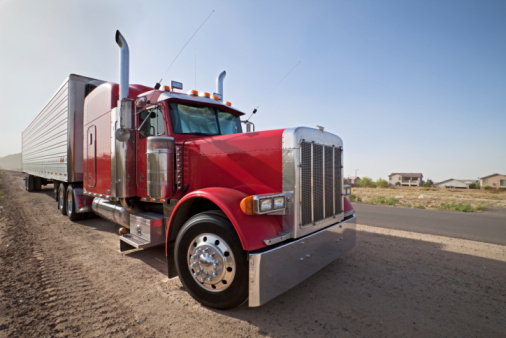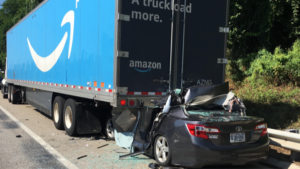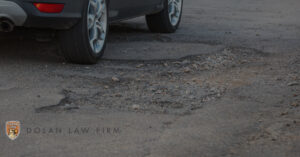
In underride accidents, when cars strike the sides or backs of semi trucks and continue under the trailer rather than being stopped by the truck body, the automobile passengers run the risk of being decapitated or suffering severe head, face and eye trauma. Federal law requires that certain large, newer commercial trucks be equipped with regulation-compliant rear underride guards. Side guards are not mandated.
Clearly, in any truck vs. car accident, the automobile usually loses, but the loss in a rear underride accident when the underride guard is missing or faulty is likely to be particularly deadly. The IIHS study raises the question whether current regulatory standards are sufficient to keep the public safe.
IIHS Test Results
After months of simulated crash tests with cars and trailers, the IIHS found that most underride guards were unsafe. Tests were conducted using “crash test dummies” in remotely controlled Chevy Malibus, which had earned top ratings for frontal crashes against other autos and light trucks. Despite the safety accolades, the Malibus were no match against the trailers. In a majority of the crashes, the underride guards slammed into the front-seat area and crumpled the cars’ roofs. In some instances, the guards gave way and did not provide any protection at all. Ultimately, the Malibus’ protective crush zones (car parts designed to crumple upon impact and absorb crash energy) did not shield passengers when the trailers’ protective guards did not perform as expected.
IIHS tested trailers manufactured by Hyundai Translead and Vanguard, which had guards that met U.S. safety specifications. It also tested trailers built by Wabash, which had guards that complied with Canadian regulations. Researchers found that the guards performed differently. Essentially, the Canadian guards performed better than the U.S. guards in full-frontal impact tests.
In one example, researchers explained how the underride guard on a Hyundai trailer bent forward, sheared its attachment bolts and broke after the test car hit it at 35 mph. Conversely, a Wabash trailer successfully prevented the car’s roof from being compromised after a similar crash. Institute President Adrian Lund explained, “Strong attachments kept the Wabash guard in place so it could engage the Malibu, allowing the car’s structure to absorb and manage the crash energy. In the real world, this would be a survivable crash.”
So when guards are correctly designed, manufactured and installed, they can save lives.
Current Specifications
In 1996, the National Highway Traffic Safety Administration, or NHTSA, established the current specification for underride guards. This replaced the prior requirement for “ICC bumpers” that did not sufficiently protect drivers when cars crashed into the backs of trucks. Trailers with rear axles that do not act as barriers were required to have the new guards (also known as rear-impact guards), and these guards were to be no higher than 22 inches from the ground.
However, safety advocates have called for guards to be lowered to compensate for smaller vehicles. They argue that guards at 16 to 18 inches above the ground would perform better and prevent many more underride-accident injuries. Further, the IIHS recommends that loopholes exempting dump trucks, flat-bed trailers and tanker trucks be closed, since underride crashes can also occur with these types of vehicles.
Potential Liability
As a matter of law, truckers and trucking companies owe a duty to use reasonable care in operating their vehicles. This duty extends to incorporating proper safety equipment onto their vehicles and ensuring that they follow safety regulations. If they fail to use such care, they can face liability based on their knowledge of what should be safe based on industry practices and current safety specifications.
The same duty of care flows to truck manufacturers, at fault potentially if they do not design and manufacture underride equipment according to government specifications and industry standards. The IIHS report may not serve as complicit acknowledgement of what equipment should be used on the part of manufacturers or trucking companies, but it could be viewed as a basis for what is considered reasonable given the safety equipment available.
Determining fault and liability is complicated and difficult in most accidents involving semis. If you have questions about safety measures and their legal implications, or if you have been in a motor vehicle accident with a big rig, contact an experienced personal injury attorney.









